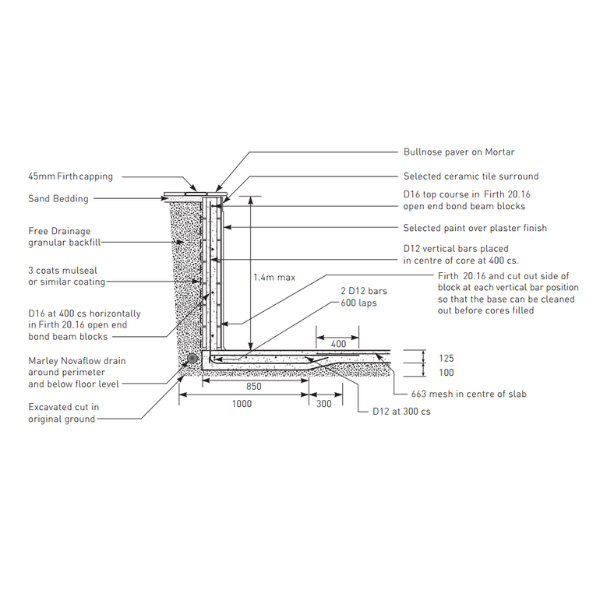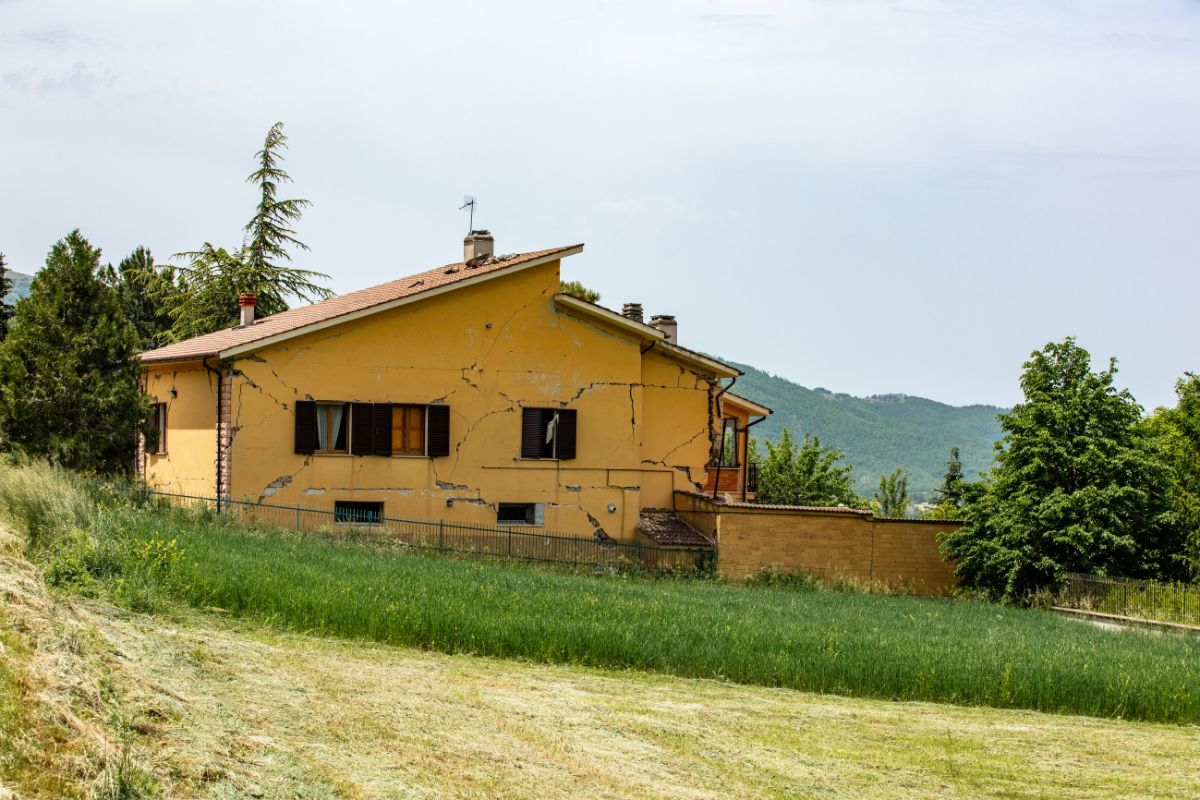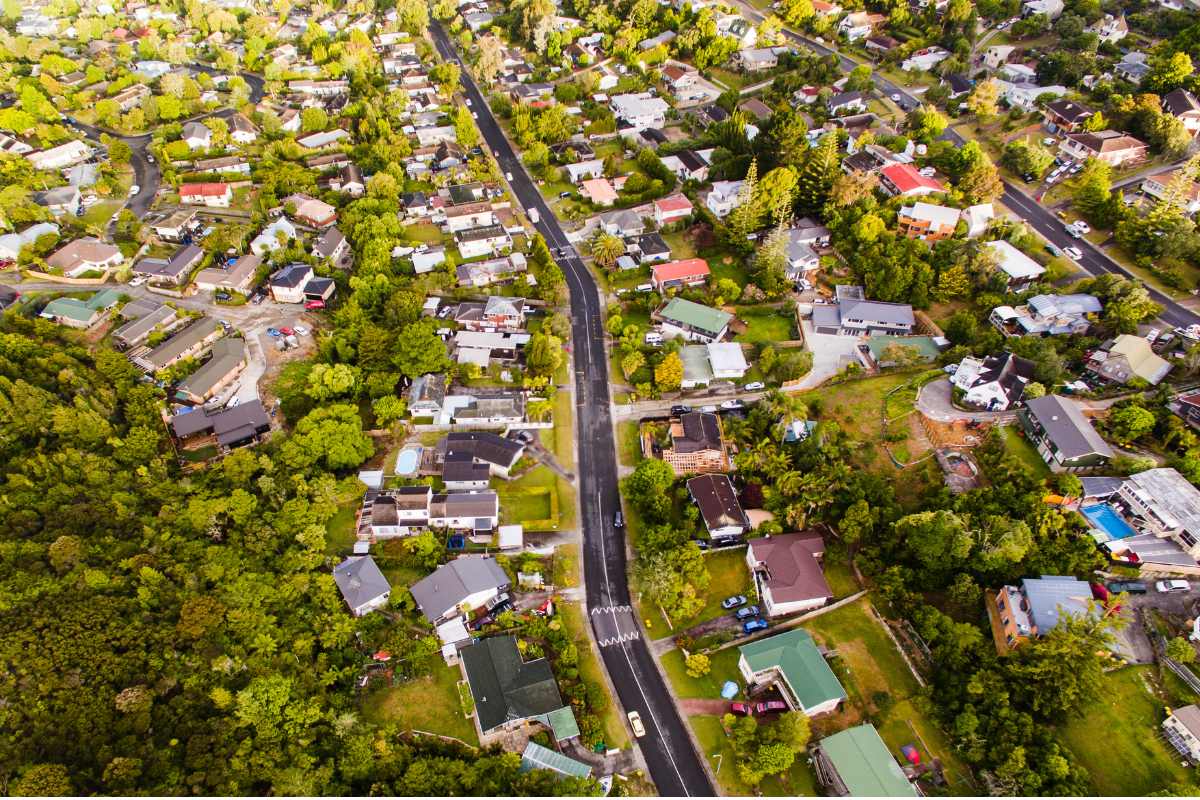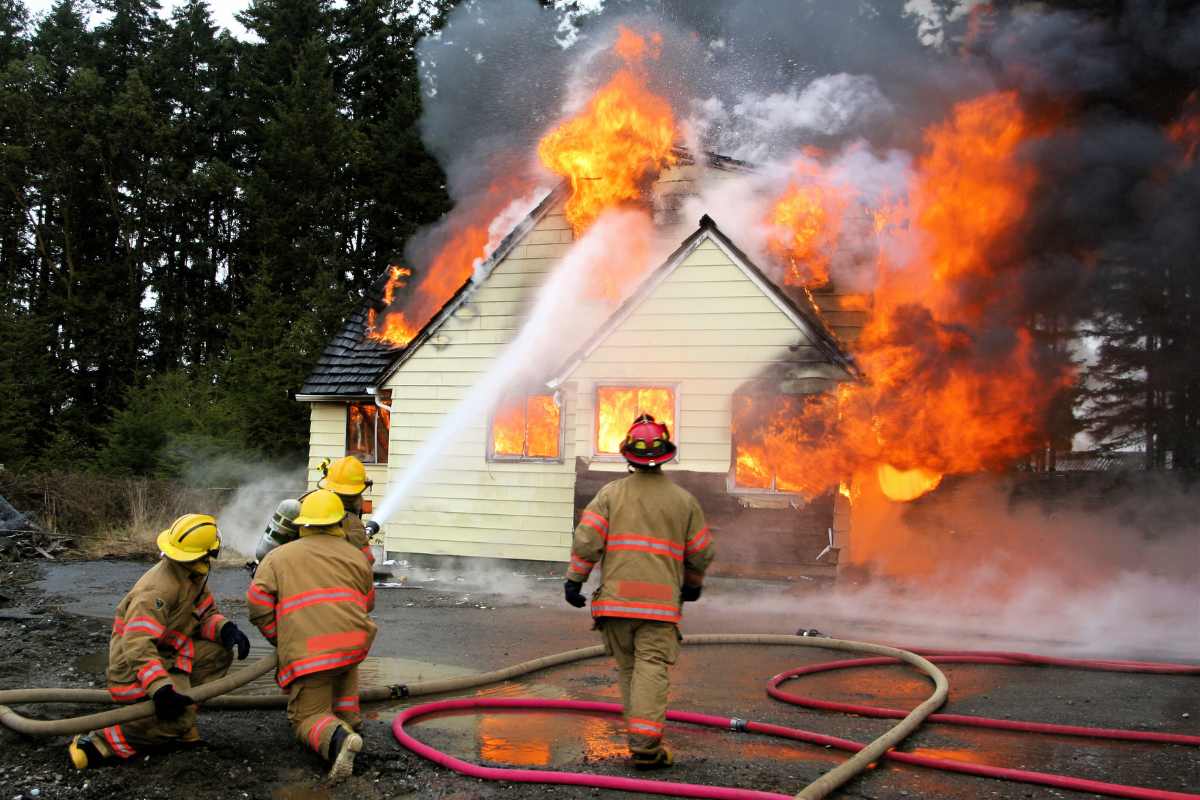Everything you need to know about Swimming Pool Certification
Relating to both in-ground and above ground concrete swimming pools and concrete masonry pools.
Pools requiring certification by a chartered professional engineer
It is also worth commenting that we have undertaken many designs for spa pools on elevated decks. Spa pools invoke additional forces due to their large weight and consequently a significant increase in earthquake forces.
Above Ground Pools
Generally the least expensive. Can be concrete which is more durable or metal pools but metal pools lack durability and are likely to last no more than 15- 20 years.
Fibreglass pools above ground need special retention piles around the edges as the walls are quite weak and therefore above-ground fibreglass pools are quite expensive.
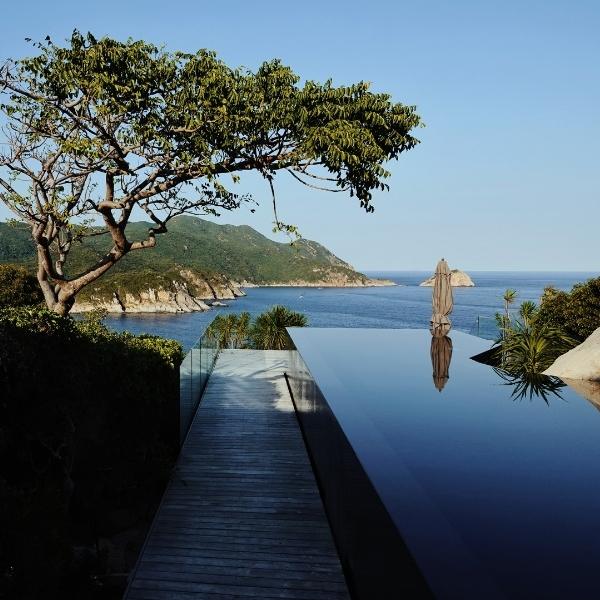
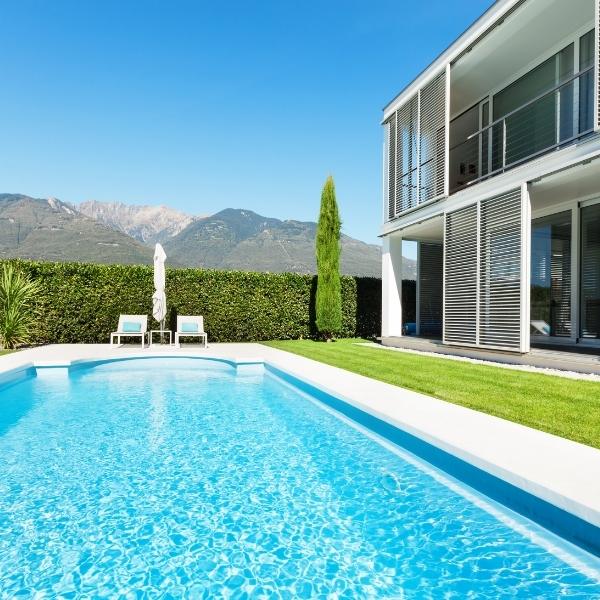
Vinyl lined in-ground pools
These are quite inexpensive and have limited shapes for standard designs (but the linings can be custom-made) and will save you a bit over fibreglass or concrete in-ground pools.
Maintenance and durability can be an issue in the medium to longer term.
Concrete pools
Normally made from shotcrete or gunite which are variants on sprayed concrete. However, we have designed concrete pools utilising precast concrete panels cast on site). Concrete pools comprise the majority of designs undertaken by Proconsult and can be configured to almost any shape or size.
There are many arrangements for concrete pools and different means of construction. Most concrete pools today are constructed with sprayed concrete and the sides are thicker at the base than the top. However, in special circumstances we have also designed pools with concrete precast panels and intermittent pilasters to support the concrete wall panels.
Concrete pools can be finished with a number of products. Some are plaster finished with marble plaster. Regrettably the chemicals in pools are quite strong and tend to erode the plaster over time. Pools protected with a paint finish do not tend to suffer with such degradation of the plaster and are cleaner and easier to maintain. Generally, concrete pools with plaster finish need resurfacing every 10 – 15 years and can be prone to algae growth. Painted polls are likely to last about 5 years between coats. If painted a number of options for paint types exist including chlorinated rubber paint or 2-pack epoxy resin paints.
Constructing a pool has its challenges and concrete can be formed to many different shapes. It is important that the reinforcing bars are closely spaced and that the stresses in the reinforcing steel are limited to avoid large cracks in the pool.
Concrete pools can readily be adapted to receive capping pavers or structures fixed to the sides of the concrete, posts for pergolas over and are suitable for in-ground and above ground situations.
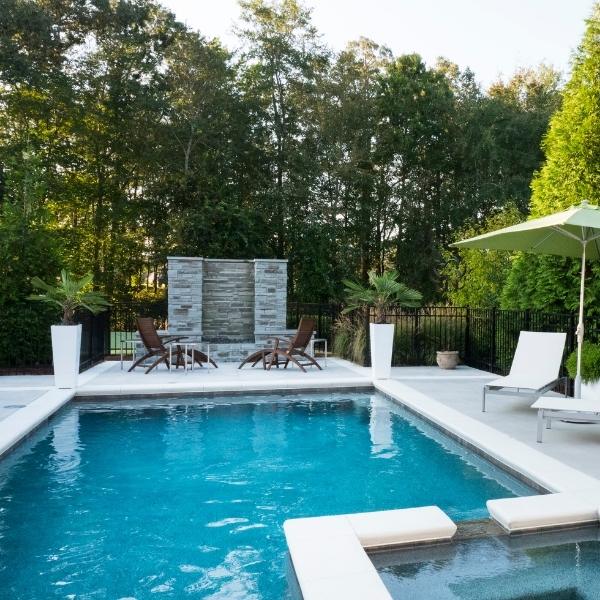
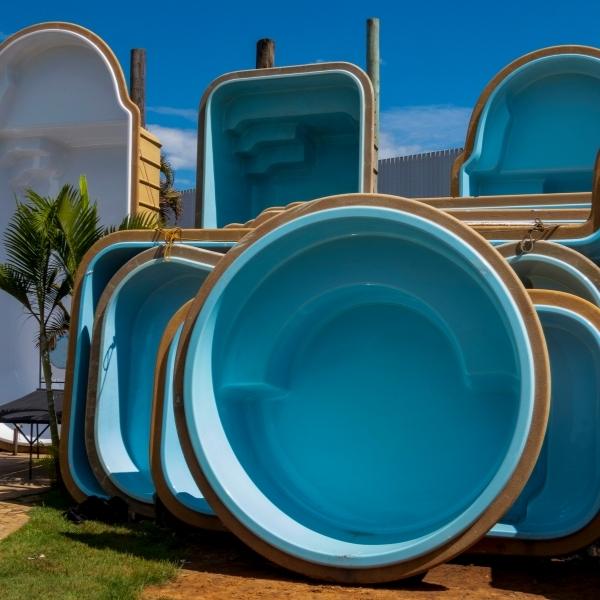
Fiberglass pools
Require the least maintenance and are probably the easiest to clean. It is often more challenging to integrate the paving over the lips of the pool.
These pools are limited in size due to transport issues (generally max 4.8 m wide x 12 m long).
Masonry pools
Refer the Firth masonry swimming pool (amended 2016) available on their website (or simply Google it!) This pool is limited in size to 4.0 m wide x 6.4 m long but it is easy to build with a concrete floor, masonry sides and to a maximum depth of 1.3 m water (1.4 m sides).
We have engineered larger pools in masonry but there are a number of limitations including the requirement to use flexible paints over the plaster such as chlorinated rubber paint – or vinyl linings.
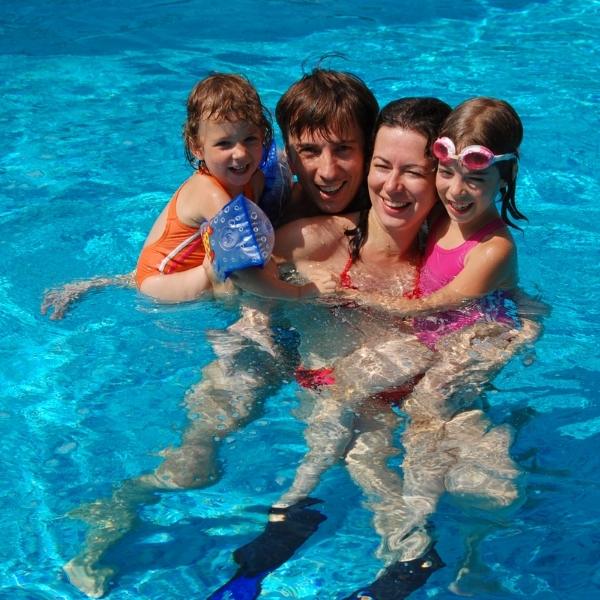
Container pools
A tendency for an increase in popularity due to their low cost. Vinyl lined. Suitable above ground but special measures required inground due to requirements to avoid longer term corrosion.
Design consideration
The following are recommendations regarding pool design and construction:
- Use an experienced builder who knows how to build pools and understands the intricacies of where piping and lights are located and how these are sealed. Experienced pool equipment suppliers can help here also.
- Setting out of your pool is paramount. We try to align all our pools so that the tile layout is exact but this requires an additional level of planning and detailing.
- Plan your steps and ledges. Full depth walking steps versus ladders is a difficult question as both have pros and cons. Walking steps are safer, especially if you have pets. Ledges are great to sit on but you need to decide what depth you want.
- Insulation under a pool and up the sides is a great way to retain heat in your pool. Also, useful to gain heat are darker paints, tile edges or “run-out” overflows (dark tiled flat areas around the edge of the pool where the water overflows).
- Infinity edge pools look great but such pools require careful planning for overflows, collection of the overflow water, additional pumps to recirculate the water, possible safety screens (see below), and additional cleaning areas.
- Some pools may require safety from falling balustrades and often it is up to Councils where and when these are used – there appears to be some inconsistency in this area. It would be safe to design a pool assuming that if the pool edge is greater than 1 meter above ground level then a safety from falling balustrade is required. There are a few exceptions for infinity pools depending on the arrangement. You cannot climb up to the pool for height above ground of a stepping point of less than 1.2 meters.
- Safety fences 1.2 meters high are required around pools to keep them safe from children. If you have a balcony or deck off your house then that balustrade also needs to be 1.2 meters high.
- Pool deck overhangs look great as you get a negative detail between the water and the underside of the deck. However, such pools may require more child supervision so that kids do not injure themselves when surfacing.
- Deep pools are great but the cost increases quickly as you get deeper. This is because the strength at the base of the wall is proportional to the cube of the depth of the wall. Be practical with your design. 1.3 m is adequate for swimming in.
- Simple shapes save costs.
- The designated place for your swimming pool may be on soft ground, ground prone to swelling, or near a slope on one face or even elevated. In such circumstances, it may be necessary to site your pool on piles.
Pool access safety issues
Pool access is restricted to prevent children from harm. The rules are somewhat complex and it is best to check out the regulations and these regulations have been well summarised in the Auckland Council notes on pool legislation. Access to your pool needs to comply with Government regulations for pool fencing.
On 1 January 2017, the Building (Pools) Amendment Act repealed the Fencing of Swimming Pools Act and inserted new provisions into the Building Act 2004. It requires barriers around pools to restrict unsupervised access by children. Barriers can include gates and suitably constructed fences, walls, and other barriers and compliant doors on house doors.
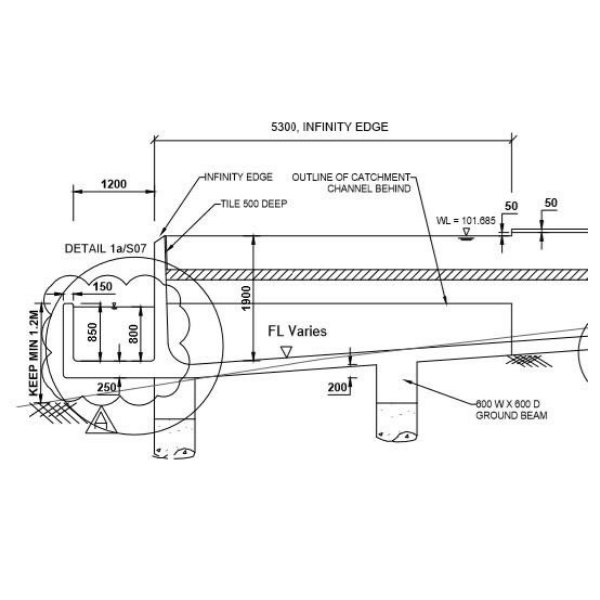
How to get Council Engineering Certification for your Swimming Pool
Proconsult have been engaged with many swimming pool designs through the country. Please contact us today to discuss your requirements.

Author: Stewart Hobbs - Principal Engineer at ProConsult
Stewart is the journal editor for SESOC (Structural Engineering Society New Zealand (Inc.)
How Much do Structural Engineers Charge in NZ?
Structural Engineer Report for Your House: What You Need to Know
Blueprints to Success: Navigating the Path to Structural and Civil Engineering in New Zealand
Cross-lease to Freehold
Protection from Fire for Residential Homes in NZ
Contracts and Insurance for Residential Construction
what our clients have to say


